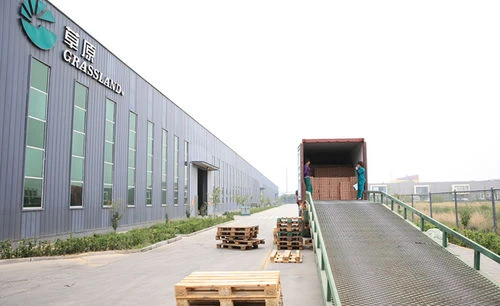Current location:masonry flap disc >>Text
masonry flap disc
disc for cutting stone96People have read
IntroductionSelection of Grinding Wheels Key Considerations for Optimal Performance Grinding wheels are fundamen...

Selection of Grinding Wheels Key Considerations for Optimal Performance Grinding wheels are fundamental tools in the metalworking industry, serving a pivotal role in shaping, finishing, and enhancing the properties of materials. The effective choice of a grinding wheel can significantly impact the efficiency of the grinding process, the quality of the finished product, and the longevity of the tool itself. Therefore, understanding the various factors that influence the selection of grinding wheels is crucial for operators and engineers alike. 1. Understanding Grinding Wheel Composition Grinding wheels are composed of abrasive particles held together by a bonding agent. The abrasives used may include aluminum oxide, silicon carbide, ceramic, or diamond, each offering distinct properties suited for specific applications. For instance, aluminum oxide is often used for grinding ferrous metals due to its durability, while silicon carbide is more effective for non-ferrous materials, including glass and ceramics. When selecting a grinding wheel, it is essential to match the wheel's abrasive material with the type of workpiece material to achieve optimal grinding efficiency. 2. Wheel Specification and Marking Each grinding wheel is classified and marked based on several parameters, including width, diameter, and thickness. The specification also includes the wheel's grade, structure, and bond type. The grade reflects the hardness of the wheel—harder wheels provide better wear resistance but may require more force to grind, while softer wheels wear out more quickly but can produce a finer finish. Structure indicates the spacing between the abrasives, influencing the wheel's cutting action and ability to dissipate heat. Understanding these specifications helps in choosing a wheel that suits the intended grinding operation. 3. Application and Operation Considerations selection of grinding wheel pdf The type of grinding operation—surface grinding, cylindrical grinding, or internal grinding—will dictate the choice of wheel. For example, surface grinding requires wheels with a fine grit for achieving smooth finishes, whereas cylindrical grinding may benefit from coarser wheels to balance cutting speed and surface finish. It's also important to consider the machine's capability and the operating speed, as using a wheel with a speed rating lower than the machine's maximum can lead to safety hazards. 4. Safety Regulations and Standards Safety is paramount in grinding operations. Selecting a wheel that complies with relevant safety standards—such as those established by the American National Standards Institute (ANSI) and the Occupational Safety and Health Administration (OSHA)—is imperative. These standards dictate the maximum allowable speeds, materials used, and testing procedures for wheels, ensuring that grinding operations are conducted safely and effectively. Operators should always inspect grinding wheels for any defects prior to use and adhere to safety guidelines during the grinding process. 5. Cost-effectiveness and Longevity While the initial cost of grinding wheels can vary widely, considering the cost-effectiveness of the wheels in terms of performance and lifespan is critical. A wheel that lasts longer and maintains its cutting efficiency may prove more economical over time, even if its upfront cost is higher. Regular monitoring of wheel wear and replacing wheels as needed can maintain productivity and avoid costly downtime. 6. Conclusion The selection of grinding wheels is a multifaceted decision that requires thorough consideration of the abrasive material, wheel specifications, application requirements, safety standards, and overall cost-effectiveness. By understanding these factors, operators can make informed choices that enhance productivity, improve product quality, and ensure safety. As grinding technology continues to evolve, staying updated on advancements in wheel technology and materials will further aid in optimizing grinding operations in various industrial settings. In summary, choosing the right grinding wheel is not merely a matter of preference; it is crucial for the success and efficiency of manufacturing processes, affecting both output quality and operational safety.
Tags:
Latest articles
High Performance 4.5 Inch 60 Grit Flap Disc for Efficient Grinding and Polishing
masonry flap discThe Versatility of 4.5% Flap Disc 60 Grit A Comprehensive Guide In the realm of abrasive materials,...
Read More
flexible grinding wheel price
masonry flap discGrinding wheels, an essential tool in various industries, serve the primary purpose of cutting, grin...
Read More
angle grinder paint removal disc
masonry flap discThe Versatility of Angle Grinder Paint Removal Discs When it comes to home improvement projects, few...
Read More
Popular articles
- Methods to Remove Paint from Alloy Wheels Effectively and Safely
- Durable 300mm Metal Cutting Disc for Precision Metalworking and Fabrication Projects
- 9 inch cutting disc for stone
- 4 inch metal cutting wheel for precision and durability in your workshop needs
- grinding disc for stone
- abrasive cut off discs
Latest articles
-
10 düymlük aluminium üçün kəsmə diski haqqında məlumatlar
-
Affordable 4 Inch Flap Discs for Grinding and Polishing Online Shopping Options
-
100mm flap discs
-
355mm cut off disc
-
Best Cutting Discs for Aluminium Grinding and Smooth Finishing Solutions
-
Top Quality Stone Cutting Discs for Precision and Durability in Your Projects